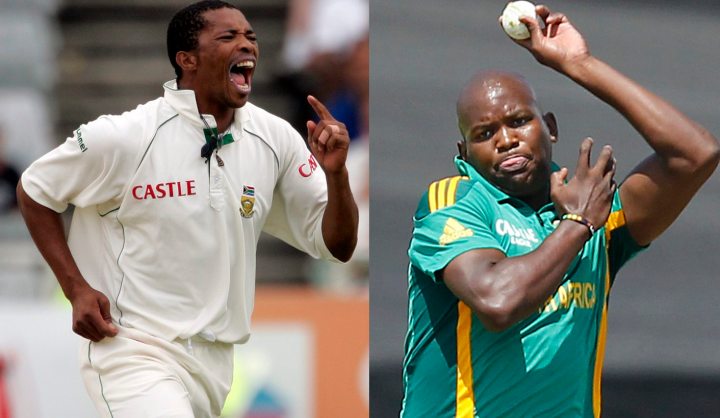Sport
The good, the quotas and the Rooney Rule

Cricket South Africa have introduced an “incentive-based transformation policy” at base level for most of its teams. As with all things concerning race in South Africa, the decision has caused much heated debate, but one cannot discount its value in the broader scheme. By ANTOINETTE MULLER.
On Saturday, Cricket South Africa announced the introduction of an incentive-driven transformation policy. In short, if the domestic franchises opt to play a black African player over the course of the season, in all formats, they will be reimbursed a percentage of the cost of the contract.
That will also filter down to semi-professional and to affiliate teams, below franchise level, semi-professionals and youth cricket. Teams are expected to “work towards” selecting at least three black players for four of their six games in any tournament.
Franchises who have a black African player featuring in over 70% of the matches across all three formats will be reimbursed the average contract cost of the qualified Black African players, and it is expected that franchises should have at least one black African player in their line-ups. Semi-professional teams that play more than two black African players for more than 70% of the matches across all three formats will be reimbursed the average contract cost.
As with anything involving race in South Africa, it’s a tricky subject to broach. Since South Africa was readmitted to international cricket in 1991, just five black players have made it to international level. Out of those five, there’s just one who has played more than 10 Tests, namely Mkhaya Ntini. Mixed race players, who were also discriminated against during the Apartheid years, have had a far larger representation, and in total, over 20 players of colour (including black players) have represented South Africa since their readmission, although only a handful have done so regularly.
Cricket South Africa believes strongly that the black population is inadequately represented at all levels of cricket.
A recent independent report suggests that the problem creeps in at younger levels when players aren’t contracted. Some black players, from rural communities, might need to go on to find jobs instead of having the privilege of playing cricket at amateur level or without a paying contract.
The need to seek other opportunities is often the result of years of discrimination which a socioeconomic imbalance, and the “quota” rule is a small way to try to give a level playing field for those still suffering from the wrongs of the past. Players should be picked on who is best, but to do that, one first has to allow an equal opportunity for everyone to become the best.
The argument exists that this kind of system is just another form of discrimination. In essence, that is an understandable train of thought. Imagine if the reverse was done and say, for example, the national soccer team was “compelled” to include a certain number of white players in the squad. There would be outrage and it would be classed as racism. Only, white people were never discriminated against during Apartheid and have as many opportunities as other ethnic groups to take up soccer – and they have had them for years.
South Africa still has a problem with race. For a new democracy that is still struggling to find its identity, racial issues remain at the forefront of many debates. In sport, in culture, in life, in government, in economics – across the board, the country, for the most part, still does not know how to deal with racial issues and the divides caused by a government that saw fit to employ laws against race. Therefore the issue of quotas will, undoubtedly ruffle a couple of feathers. The most important part of this system, though, is that it is employed at grass roots level. More still needs to be done in terms of facilities, coaching, equipment and so forth, but a system which aims to at least try to level the playing field is not a bad thing.
After years and years of excluding certain ethnic groups from elite level sport, especially cricket, there is a massive divide to overcome. To expect a team to have just one player (9% of the team) who represents the 80% majority of the country is not too much to ask and should not be viewed as unfair. Sport does mirror life, and while the notion might exist that certain races prefer certain sports in South Africa, perhaps that perception needs to be challenged and perhaps a role model is what is needed to instigate change.
Readdressing the balance of years of inequality should have started to show by now, yet it hasn’t, and the move to encourage franchises to include a certain ethnic group is one way of trying to bridge that gap, again.
Perceptions around the quota system need to change; that word in itself, “quota”, holds so many negative connotations. South Africa is not exclusive in its attempt to try to provide equal opportunities. In 2003, the NFL in America introduced what is known as the “Rooney Rule”. The rule compels teams to interview at least one minority candidate for head coach and general manager gigs. Prior to the rule, the NFL had just six black coaches in over 80 years. Since the rule was introduced, 12 have been hired.
These coaches have also managed to achieve success with at least one minority coach leading his side to the Super Bowl every year since 2006. That’s a small glimpse into what could be in South Africa, if the system is used correctly. The Rooney Rule was brought into effect when a report proved that white coaches with minimal experience were often hired over better qualified black coaches. While it is hard to argue that anybody in the current Test set up is not there based on merit, some talent at lower levels might be overlooked, for whatever reason.
Many black players will be fast-tracked to franchise level and Cricket South Africa’s CEO Haroon Lorgat referred to this as “accelerated transformation”. That is not a bad thing. A quota rule existed in the past and was eventually removed in 2007. CSA clearly feels that not enough has been done since it was abolished and will now try it again. The board will monitor the quality of opportunity, performance and progress made by black African players in the domestic competitions during the 2013/14 season before considering any further proposals for next season.
But what about the black players? Will they question their own talents and their selection, wondering whether it is based on merit or whether a franchise is simply looking for a way to cut on bills? Will there be players, fast-tracked through the ranks, who take their opportunity for granted? What about at school level? There are many unanswered questions; however, that some merit exists in trialling it should not be discounted.
Perhaps, eventually, just like with the coaches in the NFL, there will eventually be an increased number of black African players representing the country at national level. After all, isn’t that what franchise cricket is all about – an interview to get the national gig? DM
Photo: South Africa’ Makhaya Ntini celebrates his dismissal of West Indies’ Dwayne Bravo on the first day of their second test cricket match in Cape Town January 2, 2008. REUTERS/Howard Burditt (left); South Africa’s Lonwabo Tsotsobe makes a delivery during their final one-day international (ODI) cricket match against Pakistan in Benoni March 24, 2013. REUTERS/Siphiwe Sibeko (right)



















 Become an Insider
Become an Insider